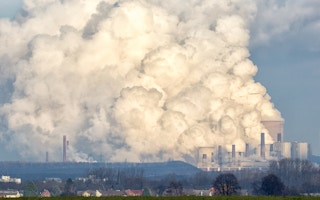Carbon markets could play a crucial role in delivering promises made at the Paris climate conference
The idea behind carbon markets is simple. A government issues a limited number of permits, which companies can then trade in return for the right to emit a certain amount of the pollutant. As companies scramble to obtain these permits in the carbon market, the price adjusts. High demand for permits will drive up price, and vice versa. Carbon is measured by the tonne emitted and, crucially, all companies within a particular country face the same price.
Carbon markets are already in use in Europe, Korea, seven Chinese provinces and cities, and several US states among other places. More are in the pipeline with China, the world’s largest emitter, planning to start a national market in 2017.
Yet most existing markets operate independently of each other. European permits cannot be used in the US, and Korean companies cannot trade emissions with firms in China. This is a missed opportunity. If companies in different markets were able to trade, they could make savings every time the price of permits varied across markets.
Enter carbon dating
This sort of linkage between markets has quietly been receiving increased attention. Prior to the UN summit in Paris last December, the G7 group of countries launched the Carbon Market Platform. The Paris Agreement itself contains important provisions for the use of linked markets.
We recently analysed the potential cost savings when previously isolated markets are linked. Our study examined how four key factors determine whether linking carbon markets, what we call carbon dating, is worth it.
So, what does make a good carbon date?
Opposites attract
Carbon markets will experience ups and downs due to booms and recessions, say, or weather fluctuations that affect demand for permits.
We found that opposites attract. A country prefers the demand in its partner’s market to be more variable (it changes over time) and inversely related to its own (my demand is up when yours is down). This makes the gains from trading larger.
“
European permits cannot be used in the US, and Korean companies cannot trade emissions with firms in China. This is a missed opportunity.
Size matters
We find that the smaller market in any match tends to benefit most from cost savings. So a very large market such as China has little incentive to link up with a smaller place such as South Korea. In practice, the most mutually beneficial links are likely to be between countries (or other jurisdictions such as the EU) of a similar size, particularly if these markets are subject to different economic fluctuations.
This doesn’t mean that links between large and small markets can’t happen. There is, after all, a big incentive for smaller markets to court larger ones. But in these cases the larger market may make certain demands of the smaller.
Dealing with demanding partners
Taxes on international permit transactions are not unheard of. These change the size and split of the cost savings that can be made. Fewer permits are traded and the benefits become smaller.
But such a tax can be tolerated and it may be worth sticking with a partner in spite of it. It might not be ideal, but it’s usually better than staying single.
Getting off to a good start
Negotiating the partnership, harmonising market rules and setting up a platform for international transactions is complicated work, and no link will make economic sense if these upfront costs are too high. Conversely, if the costs are negligible, both partners will be better off. This is likely the reason why negotiations between the EU and China have barely started whereas those between the EU and Switzerland have successfully concluded.
Where the picture isn’t so clear, our analysis highlights other possibilities. For example, when upfront costs are shared according to size, the larger partner may prefer not to link even when linking makes sense in aggregate.
Carbon dating in the real world
These factors are important in theory but are they relevant in reality? We used data from China, various European countries, the US power sector, and the international aviation sector to model how each would benefit from wider carbon credit trading.
We found the benefits of links between “large and similar” markets can be dwarfed by those between “small but different” markets. So instinctive decisions – such as trading with a large partner, or your neighbour – can actually end up having costly consequences.
For instance, under a few strong but not outlandish assumptions, it may appear to make sense for the international aviation sector to partner with the US because the latter is so large. But in our analysis it would make more sense for the aviation sector to partner with Korea, in part because they are so different from one another.
Carbon dating has lots of potential, and could prove vital in encouraging countries and companies to reduce emissions cost-effectively. But, as our research shows, partnerships are far from a straightforward prospect. Finding a good date, it turns out, is never easy.
![]()
Luca Taschini is research fellow, London School of Economics and Political Science and Baran Doda is research officer, Grantham Research Institute, London School of Economics and Political Science. This article was originally published on The Conversation.









